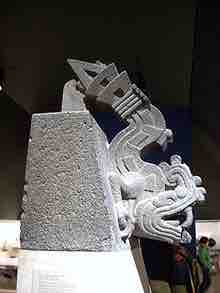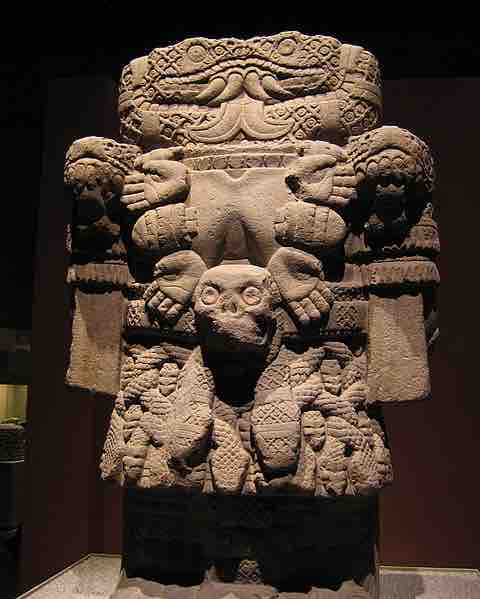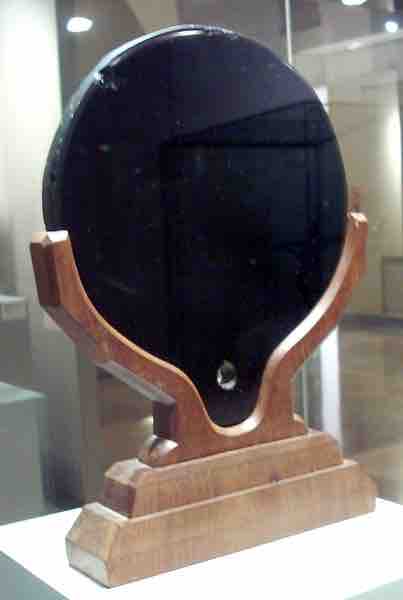Overview: Aztec Sculpture
As with many Mesoamerican cultures, the Aztecs excelled in stone sculptures that ranged from small works of art to monumental buildings. Aztec sculpture often took the form of striking carvings of Aztec gods or mythical creatures, and it was expressed through ceramics, architecture, freestanding three-dimensional stone works, and relief work. The grand city of Tenochtitlan contained some of the finest examples of Aztec sculpture, from its temples and pyramids to its elaborate stone palaces.

An Aztec Sculpture of the Mythological Serpent, Xiuhcoatl
Xiuhcoatl, a mythological serpent in Aztec religion, was a common subject of Aztec art.
Aztec Motifs
Skull Art
A great deal of Aztec sculpture incorporated the skull motif; today this is known in Mexico as "skull art." In Aztec tradition, both death and life are worshiped together, and the skull—a symbol of death—was a promise of resurrection. The use of skulls and skeletons in Aztec art originated before the conquest, and the Aztecs often carved skulls into their stone sculptures, monoliths of lava, and masks of obsidian and jade.

Aztec Statue of Coatlicue, the Earth Goddess
This sculpture is currently held in the Museo Nacional de Antropología in Mexico City.
Carved Mirrors
A unique and versatile form of sculpture was the carved mirror. Obsidian mirrors in pre-Columbian times were fashioned from stone and served a number of uses, from decorative to spiritual. During the late Postclassic period (c.1200–1521), these mirrors, symbolizing rulership and power, were used in rituals to spiritually access the Aztec underworld and communicate with the realm of the dead. Aztec mirrors were originally held in wooden frames and were decorated with perishable ornaments, such as feathers. During the Spanish conquest, Hernán Cortés was known to have sent obsidian mirrors back to the royal court in Spain, where they became widely collected among the European aristocracy.

Aztec Mirror
This mirror was carved from obsidian on a modern wooden base and is currently held in the Museum of the Americas, Madrid.
Calendar Stone
One of the most well known Aztec sculptures is the Calendar Stone. Also known as the Mexican Sun Stone, Stone of the Sun, or Stone of the Five Eras, it is a large monolithic sculpture that was excavated in the Zócalo, Mexico City's main square, on December 17, 1790. The stone is 11.75 feet in diameter and 3.22 feet thick, and it weighs about 24 tons; on its surface are intricate carvings and sculpted motifs that refer to central components of the Mexica cosmogony. While the exact purpose of the stone is unclear, archaeologists and historians theorize that there could have been many functions to the stone, from spacial and time-related to political and spiritual.
Calendar Stone
The monolith of the Stone of the Sun, also known as the Aztec calendar stone (National Museum of Anthropology and History, Mexico City).